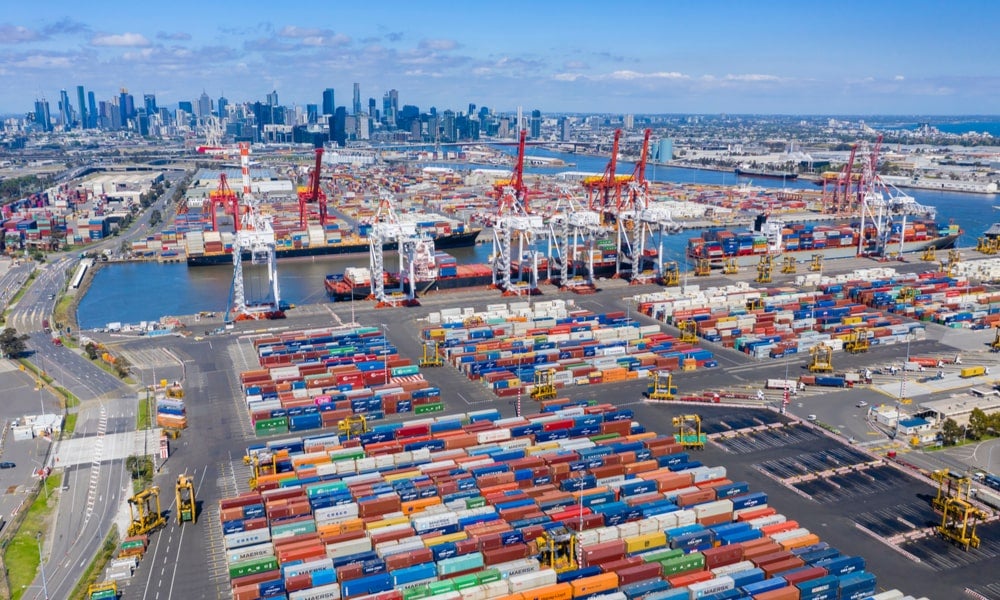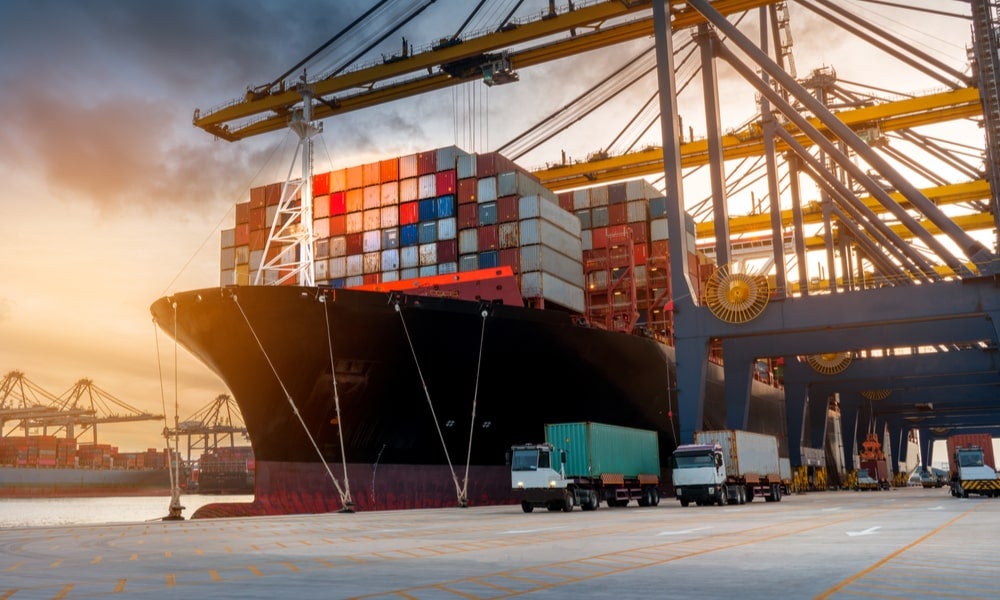The privatisation of Australia’s container ports has failed miserably
Federal and state governments need to take three steps to stem the economic damage caused the failed privatisation of Australia’s major container ports
The privatisation of Australia’s major container ports, failed competition measures and cartel-like behaviour from major shipping lines are putting significant pressure on supply chain costs – all of which are being passed onto the Australian public.
New research from UNSW Business School has found that privatisation of port authority functions (partly incentivised by the Federal government through the Asset Recycling Scheme) has drastically failed to achieve original objectives including improved cost-efficiencies, stronger competition and better return on investment for the Australian taxpayer.
In the 1980s, successive Australian governments began to pursue the widescale privatisation of publicly-held assets. The port authorities of four of the five biggest container ports in Australia (Brisbane, Botany, Melbourne and Adelaide in 2001) have been privatised over the past 10-15 years. This process has been undertaken on a lease basis (with typical terms of between 50 and 99 years), a controversial policy since port authorities are a natural monopoly. These leases were often priced either well above or well below market estimates, according to Dr Greig Taylor, a lecturer in the School of Management and Governance at UNSW Business School.

In the case of overpricing, this has led to escalating rental costs for stevedores as private investors seek return on investment, which is in turn passed down the supply chain through additional charges on boxes passing through container terminals. Under-pricing has seen privatised port authorities reap excessive profits, according to Dr Taylor, with leases proving to be woefully poor value for money for taxpayers and state governments.
“The international academic literature demonstrates that port authority privatisation contributes little towards port efficiency and can often be vulnerable to hedge fund profiteering,” said Dr Taylor, who noted foreign pension, hedge and investment funds (such as the Abu Dhabi Sovereign Investment Authority) often own significant stakes in Australia’s major container ports – with profits (at least partially) sent offshore.
Dr Taylor together with Dr Matthew McDonald, a former UNSW Business School academic and now Professor of Social Psychology at Fulbright University in Vietnam, recently conducted a two-year study that culminated in submissions to the ongoing Productivity Commission’s Inquiry into Australia's maritime supply chains and a recently published research paper, In practice and in principle: ‘Free market’ discourses and container port reform in Australia.
Their study, which consisted of interviews with a variety of port stakeholders as well as a content analysis of 20 years of government, ACCC and other reports, said privatisation and failed competition measures have added significant cost inefficiencies to the landside supply chain and, ultimately, increased costs for consumers.
Read more: Export quotas: how should companies manage production?
Port productivity (or lack thereof) and stevedores
Both federal and state government-driven port reform over the past 15 to 20 years has failed to improve container port productivity (largely advocated by the ACCC) as measured by ‘crane rates’ (essentially how fast shipping containers are loaded on and off ships), according to the study. “Labour productivity at Australia’s container ports has risen significantly, while cost per box has fallen for shipping companies, but the crane rate has remained relatively constant, despite capital investment in automated equipment and systems,” said Dr Taylor.
Interestingly, the study found the most efficient container port in Australia (as measured by the crane rate) is Fremantle – the only one whose port authority remains in public hands (though the privately owned Melbourne and Botany ports handle three times more throughput than Fremantle).
The research study also found the ‘third stevedore’ policy (Hutchison Ports Australia, in addition to DP World and Patrick) at three of the five major container ports has failed to deliver competition-driven efficiency gains, particularly in the aforementioned ‘crane rate’ measure. In fact, Dr Taylor said stevedore companies have contributed to rising levels of cost inefficiency in the supply chain by introducing (and then exponentially escalating) “terminal access” or “infrastructure” fees to unwarranted levels.

For example, since Patrick introduced the industry’s first ‘terminal infrastructure levy’ at the Port of Brisbane in 2010, this levy has ballooned by more than 2000 per cent from $4.95 to $110 per container. In total, stevedoring companies generated $256.4 million in revenue from infrastructure/access charges in the year to June 2020 (a 51 per cent increase on the previous year).
However, stevedoring companies say they have introduced and subsequently increased these additional charges because of decreasing profit margins, which have been impacted by higher rents imposed by privatised port authorities and pressure from quayside customers such as international shipping lines.
Cartel behaviour from international shipping lines
Dr Taylor also noted there has been significant global conglomeration in international shipping lines, which hold a considerable amount of influence over national supply chains and land-side stakeholders including stevedores, importers, exporters and haulage companies. Their market power can be used to force down prices charged by stevedores to handle containers, and this is a major issue that has been highlighted by the Maritime Union of Australia (MUA).
Read more: How to manage supply shortages in the face of unexpected events
There are five big shipping companies that the MUA claims are essentially acting as cartels and deliberately manufacturing pressure on supply chains around the world through shipping delays to maximise their profits. For example, three major global container shipping alliances control 90-95 per cent of vessel cargo capacity in Melbourne, Adelaide and Fremantle, and 70-80 per cent in Sydney and Brisbane. In Melbourne, the top four container liner companies control about 76 per cent of vessel cargo capacity.
In its submission to the Productivity Commission’s Inquiry into the long-term productivity of Australia's maritime logistics system, the MUA suggested the regulator be given powers to investigate and gather evidence on the cartel behaviour of international shipping lines and share intelligence on shipping line cartel or anti-trust behaviour with regulators in the US, Canada, New Zealand and Britain.

Why the Productivity Commission report falls short
Dr Taylor also took issue with the Productivity Commission’s recent draft report on Australia’s maritime logistics system: Lifting productivity at Australia's container ports: between water, wharf and warehouse. Both Dr Taylor and Dr McDonald put a submission into the Productivity Commission ahead of its draft report. Their submission drew on key points from their research study, which noted the way the government and associated bodies measure productivity is “one-dimensional and flawed”.
This was a point that Dr Taylor elaborated on in his criticism of the Productivity Commission’s draft report: "the overwhelming emphasis seems myopically placed on lifting productivity. Privatisation and failed competition measures have added significant cost inefficiencies to the landside supply chain and, ultimately, increased costs for consumers," he said.
Instead, more weight should be placed on policy failures in the Commission’s analysis of Australia’s container port industry. Furthermore, he highlighted the commission’s lack of emphasis on policy failures is compounded by its overt (and arguably ideological) antipathy towards workers and the dominant union in the industry, the MUA. “Until the Commission has the data from each step of the container handling process inside the dock estate, it should temper its willingness to lay the majority of the blame for inefficiency on workers/the union,” said Dr Taylor in his response to the draft report.
Read more: Three ways CEOs can untangle supply chains
Three steps federal and state governments need to take
Both Dr Taylor and Dr McDonald were critical of politicians and their role in contributing to the failure of the privatisation of Australia’s major container ports: “If state and federal governments focused less on short-term financial returns, political expediency or ideological assumptions, Australia’s ports would be better situated to deliver long-term growth and sustainability for its economy and citizens,” they said in their research study.
They made three important recommendations to address the policy shortcomings that have plagued the port reform program. First, state regulation and oversight should be introduced without delay to limit privatised port authorities implementing rent rises for stevedoring companies above a reasonable market rate (to be calculated by a state government-created regulatory body), particularly at the ‘big three’ container ports.
Second, state regulation and oversight should be introduced without delay to stifle the continued unsustainable escalation of terminal access and infrastructure charges levied by stevedores on landside customers, which add to cost inefficiencies in the maritime supply chain.
And third, a federal review or inquiry should be established to attempt to bring some centralised coordination to port policy in Australia. Such a review could also consider a minimum price per box for container handling, since conglomeration has increased the market power of big shipping companies, forced down prices, and had a reciprocal effect on the introduction and escalation of terminal access and infrastructure charges by stevedores to make up the shortfall in revenue.
Subscribe to BusinessThink for the latest research, analysis and insights from UNSW Business School
Importantly, Dr Taylor said one way to dilute the influence of shipping conglomerates over Australia’s national supply chain would be to rebuild an Australian flagged and crewed national strategic fleet, something already mooted by the current federal government and which is supported by the MUA. “It would likely be run on a commercial basis, with scope for requisition by the Federal Government in the event of conflict or emergency,” he said.
Dr Greig Taylor is a lecturer in the School of Management and Governance at UNSW Business School. His broad areas of academic research interest involve the sociology of work, trade unionism, labour history, critical management studies, cross-cultural management, and political economy. For more information please contact Dr Taylor directly.
